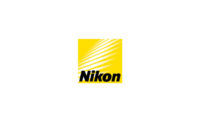Benefits of Multi-Sensor CMMs by Industry
Aerospace, automotive, and medical device OEMs, take note.

CardioBridge purchased a ZEISS O-INSPECT multi-sensor measuring machine to ensure that all the parts of the Reitan catheter pump comply with the specifications. Measuring technicians use O-INSPECT to measure each component—with the optical or contact sensor depending on the size, geometry, and surface finish. Source: ZEISS Industrial Metrology
In a previous article, we observed how multi-sensor CMMs can perform 2D and 3D measurements interchangeably in a single run. Today, high-precision CMMs also can carry out form measurement functions, says David Wick, product manager at ZEISS Industrial Metrology.
In his article on the subject, Wick describes how touch, optical noncontact, and form measurement capabilities can now be combined and handled with a high level of precision on a single machine using a single software package. Many industries require all three capabilities, Wick writes, and thus would benefit from using one multi-function, single software CMM, as opposed to using multiple machines and software programs.
For each industry, listed below, we asked Wick to expand upon the benefits that a multi-sensor CMM can bring.
Aerospace
One of the most time-consuming measurement applications in aerospace is measuring the characteristics of turbine engine blades, Wick says. This is because the blades contain multiple characteristics that must be measured in different ways and with different sensors, contact and noncontact.
But with a multi-sensor CMM, one can change sensor types automatically to measure different features of the same part on the same machine from a single set-up.
“That saves you a tremendous amount of time in measuring everything you have to measure and also makes it very repeatable,” Wick says. “You don’t need multiple machines, and you won’t have any downtime in between measuring Characteristic A by touching it and Characteristic B by not touching it.”
Automotive
According to Wick, a comparative example in the automotive world is surface finish measurement for car, truck, and motorcycle engines. Traditionally, automakers used a regular CMM to measure characteristics like diameters and depths of holes, Wick says, and used a separate roughness-checking machine sitting next to the CMM to measure the engines’ flat machined surfaces.
“Now, with multi-sensor measuring machines, those automotive companies can do it all on one machine—no downtime, no moving parts back and forth,” Wick says. “They can get their measurement reports from all of the different measurements in one format, from one software, at the same time.”
This speeds up and streamlines the process, Wick notes, as one software package handles all of the sensors and one reporting package within the software produces all of the reports.
“The customer will end up saving tons of time,” Wick says. “And because there’s only one machine and not two, the customer will save some money as well, in terms of their cost of ownership: a service plan for one machine and not two, repairs for one machine and not two.”
Medical Devices
Orthopedic devices such as artificial knees and hips have complex geometries for a reason: to fit perfectly inside a human body. Therefore, Wick says that a machine with multiple sensors—some that can touch the device, and others that can trace it optically without touching it—provides the same benefits for an orthopedic device company as for an automotive or aerospace company, plus one more.
“In the medical world, the actual physical size of the machine is very important,” Wick says. “The smaller you make it, and the less floor space it takes up, the less it costs, because floor space in a medical orthopedic device factory is very expensive.
[Medical device manufacturers] like high-precision, multi-sensor, and very small machines,” he continues. “If you can say to them, ‘This machine runs a tactile sensor and three different optical sensors; therefore, you don’t need to run a separate optical measurement machine,’ you would save them a ton of money right away.”

The ZEISS ROTOS sensor makes it is possible to check the size, form, and location tolerances together with the roughness parameters on a single CMM, like the ZEISS PRISMO. Source: ZEISS Industrial Metrology
Quick-Turn Prototyping
Wick also cites quick-prototyping as an emerging industry for multi-sensor measurement. He provides the example of a customer coming into a rapid prototyping shop with a valve for an old car. The customer doesn’t have a 3D model for the part—because 3D models didn’t exist back then—but he wants the shop to make more of it. The shop can do this for him quickly and easily with a multi-sensor CMM.
“If you have a CMM that has tactile sensing and noncontact, laser line scan sensing on it, then you can scan the part, and the CMM will build you a three-dimensional CAD model—with an exact copy of all the dimensions and shapes of the product you want to make,” Wick says.
Without a multi-sensor CMM, however, the process could take days longer: a big problem for a business predicated on a quick turnaround.
“If you had to depend on a traditional, tactile-only CMM to scan it and build up the model for the old part, it might take days just o scan it,” Wick explains. “But with a multi-sensor system, you can scan in an hour, build the part that same day, and deliver it the next day.”
Other Industrial Manufacturers
Other manufacturers can benefit from multi-sensor CMMs as well, Wick says, such as companies that make gears in various sizes for automotive or industrial applications.
“If you have a six-inch diameter gear with a lot of teeth on it, you have to measure the surface roughness of the top of it, make sure it’s flat enough, and you have to measure the shape of all the teeth that you’ve made with your milling machine,” Wick says. “That can be done faster with a multi-sensor CMM than not.”
The same is true for job shops that make precision machined parts for customers based on 3D models, Wick says. The shapes and materials of these parts vary, so the ability to measure parts without touching them accelerates the process.
Wick also points to companies that make headlights and taillights, which are usually covered in clear and red plastic, respectively.
“The makers of those plastic assemblies have to be able to measure the final shape of what they’ve molded and the thickness of what they’ve molded,” Wick says. “With a noncontact optical sensor on a CMM, you can measure the shape—in other words, ‘Did I form it right?’—and the thickness of that plastic, whether it’s red or clear.”
With a multi-sensor system, Wick says it’s possible to not only quickly confirm that the molding process is working, but also quickly retrieve results through the software and easily send them upstream to the customer anytime they want them.
“Usually the process that gets improved is whatever the customer’s manufacturing process is, and the way it improves is their productivity goes up, since there’s no setup time or teardown time, no moving parts, and the reporting is easier,” Wick says. “Some of our customers run these [multi-sensor] machines three shifts a day, all the time; and because it’s one machine and not two, you can produce more, and your return on investment goes up faster.”
Looking for a reprint of this article?
From high-res PDFs to custom plaques, order your copy today!






